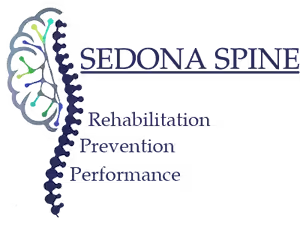DRY NEEDLING TREATMENTS
DRY NEEDLING: What is it and how does it differ from Acupuncture?
A common question people ask is how dry needling is different from acupuncture.
Both treatments involve inserting very thin needles into the skin, and in fact, the needles used in dry needling are often the same ones used by acupuncturists. However, from a medical and philosophical standpoint, these two practices are quite distinct.
Dr. Farnham studied Medical Acupuncture at McMaster University in Ontario, Canada and has also participated in several dry needling courses.
Both Medical Acupuncture and Dry Needling are based on Western medical principles and work within a neuroanatomical model, aiming to restore the body’s natural balance and homeostasis.
Acupuncture, on the other hand, comes from Traditional Chinese Medicine.
It focuses on balancing the body’s energy flow, known as qi. Acupuncturists insert needles into specific points that are believed to help restore or regulate this energy.
Medical Acupuncture and Dry Needling, in contrast, target specific trigger points within muscles, points along the nervous system, or tender areas that cause pain or limit movement.
By the way, the term “dry” needles refers to the fact that nothing is injected during the procedure, unlike when you get a shot.
As mentioned earlier, the needles Dr. Farnham uses are the same ones commonly used by acupuncturists.
BENEFITS OF DRY NEEDLING:
Dry Needling has been found to:
- Decrease muscle tightness
- Increase blood flow
- Reduce pain
Dry Needling can be a very effective treatment for pain relief, helping with muscle recovery, restoring mobility, and promoting healing of connective tissues.
Many patients report reduced pain and improved range of motion soon after a session, while others may need multiple sessions to see full results.
DRY NEEDLING FOR PAIN RELIEF
Overused or strained muscles can develop myofascial trigger points.
These are tight, knotted areas within a muscle, often located near the point where the nerve connects to the muscle. These points can be sensitive and painful, and may limit movement or cause discomfort. When a muscle’s movement is restricted, the joint it connects to can experience abnormal stress, potentially leading to joint damage.
Muscles that are overused or not used properly can go through an energy crisis.
This happens when muscle fibers aren’t getting enough blood supply, which means they aren’t receiving enough oxygen and nutrients to return to a normal state.
A lack of blood supply causes the surrounding tissues to become more acidic and the nerves to become more sensitive.
This can lead to pain and soreness. However, when a dry needling needle is inserted into a trigger point, it helps restore blood flow to the area, which removes toxins and acidity, increases oxygen levels, and reduces muscle tension.
WHAT DOES DRY NEEDLING FEEL LIKE?
The McMaster University Medical Acupuncture program is known for training its graduates to insert needles with great skill, often with minimal or no discomfort for the patient.
Dr. Farnham will first use his hands to locate the appropriate points, and then carefully insert the needle. Once in place, a person may feel a mild sensation of fullness. A local twitch response, which is a quick muscle spasm, may occur. This is actually a sign that the treatment is working.
After a dry needling session, a person may experience some soreness or tenderness for up to 48 hours.
It’s important to keep the muscle moving after treatment to maintain the benefits gained.
Learn More About Dry Needling Treatments
SIDE EFFECTS OF DRY NEEDLING
Dry Needling is considered a safe treatment with very few risks.
You may feel some stiffness, soreness, or bruising at the treatment site. In extremely rare cases, there may be bleeding or infection.
IS DRY NEEDLING RIGHT FOR YOU?
Dry Needling is rarely used as a standalone treatment, but it is often a valuable part of a larger treatment plan that could include rehabilitation or manual therapy.
Dr. Farnham can help determine whether dry needling could be a useful addition to your treatment plan for muscle recovery, mobility issues, or for managing acute or chronic pain.
DO YOU HAVE MORE QUESTIONS ABOUT DRY NEEDLING?
For those who are curious, here are some of the most downloaded, open-access research articles published by AAMT Faculty & Fellows in internationally recognized, peer-reviewed journals, covering the effectiveness and neurophysiological mechanisms of dry needling and spinal manipulation.
